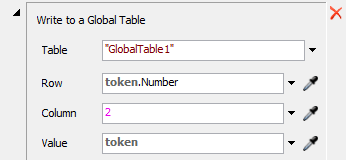Sample model.fsmI have tried setting a label using approaches such as token.puller / token.pulled (using lists), token in activity, and arrays.
I am trying to find a more flexible way to set a label on a token without having its precise "location" in the process flow. For doing so, I guess using the "id" is a good idea.
However, using the command token.byID(xx), I could not manage how to edit the information into parenthesis to read a table cel or a token label. This approach is used in the bottom part of the process flow of the attached model.
I would also like to know how to create a reference to a token similarly to the one that have made to the processors, using a global table, and also which is the easiest way to use the token Id as a reference.
Thanks for any help.





